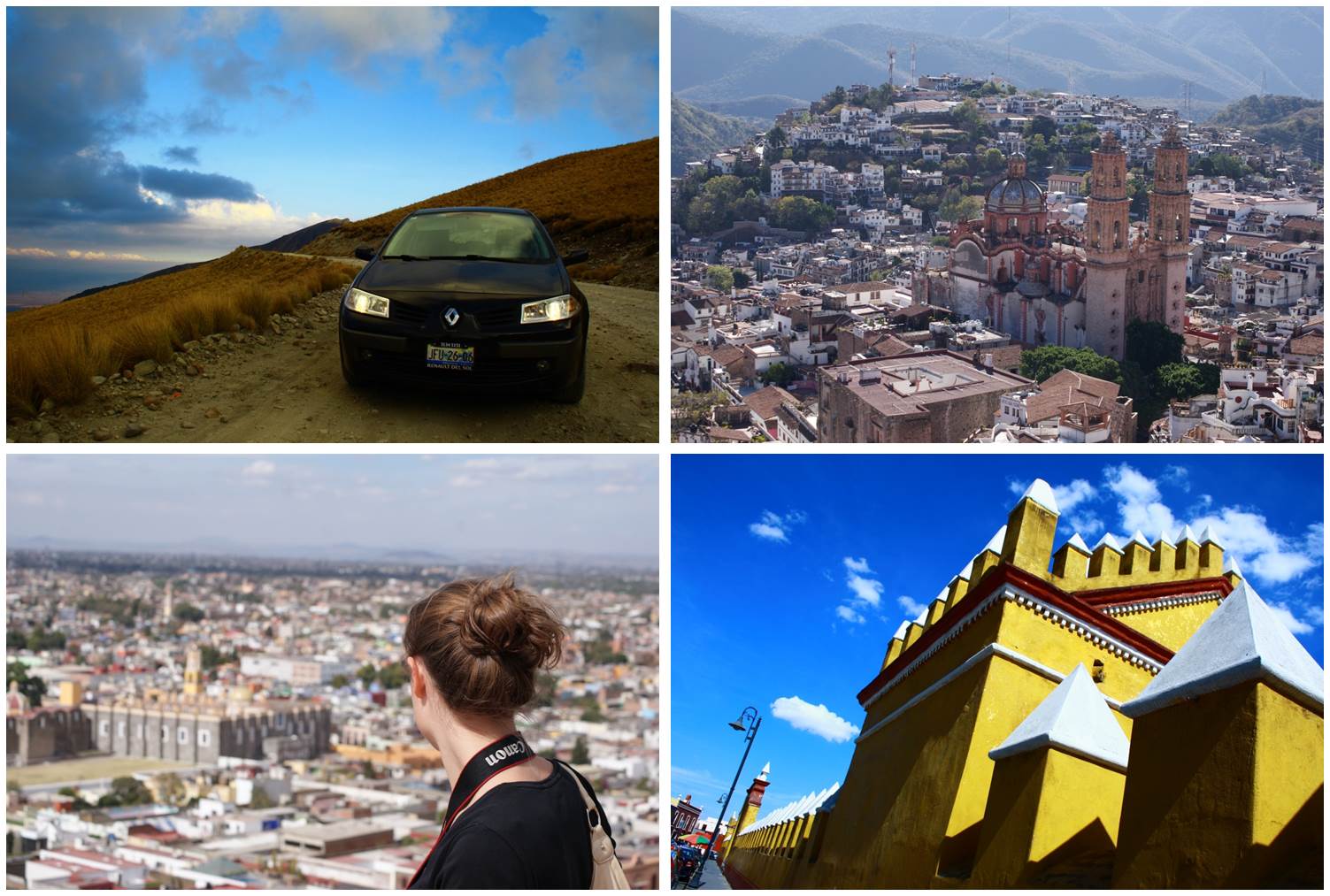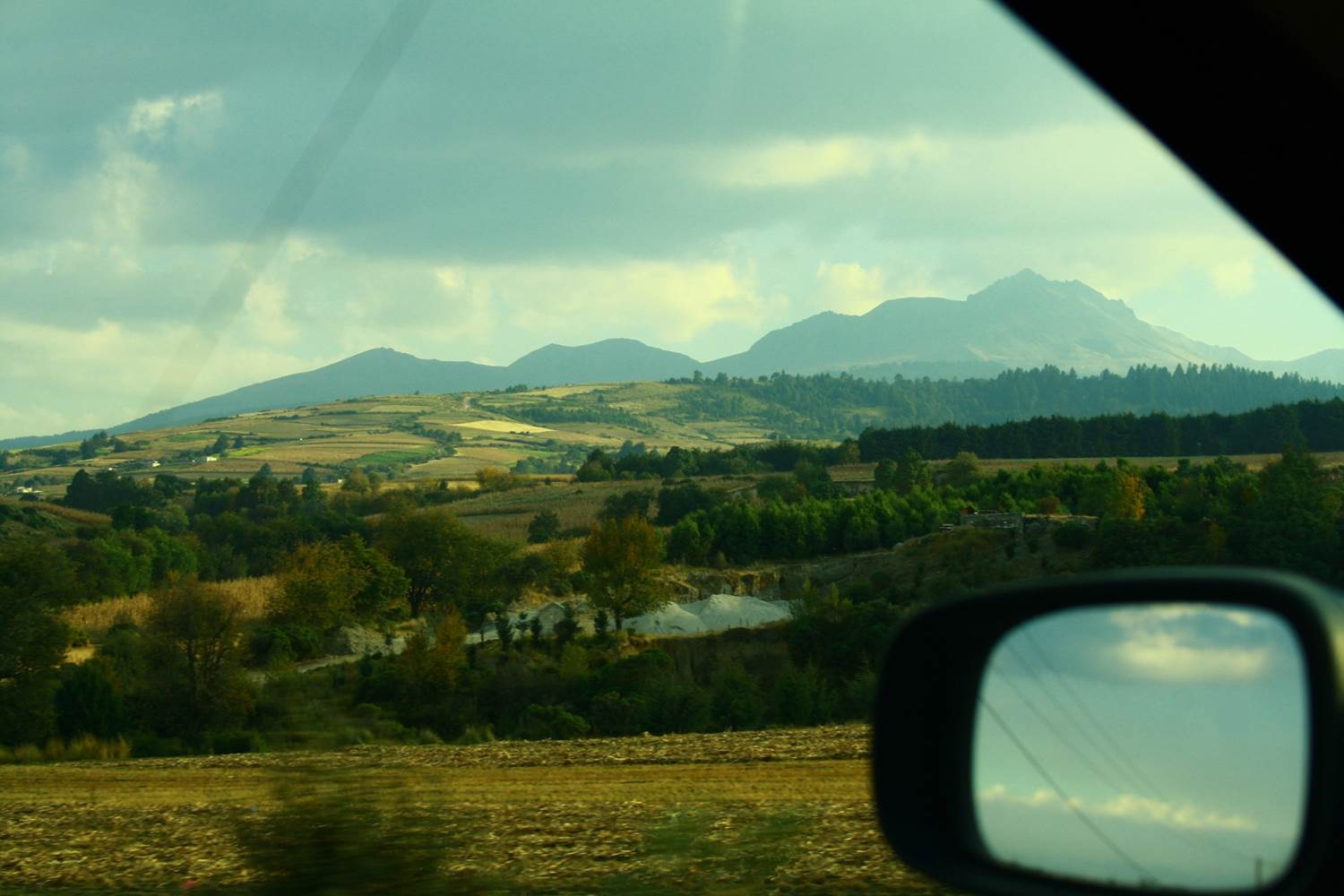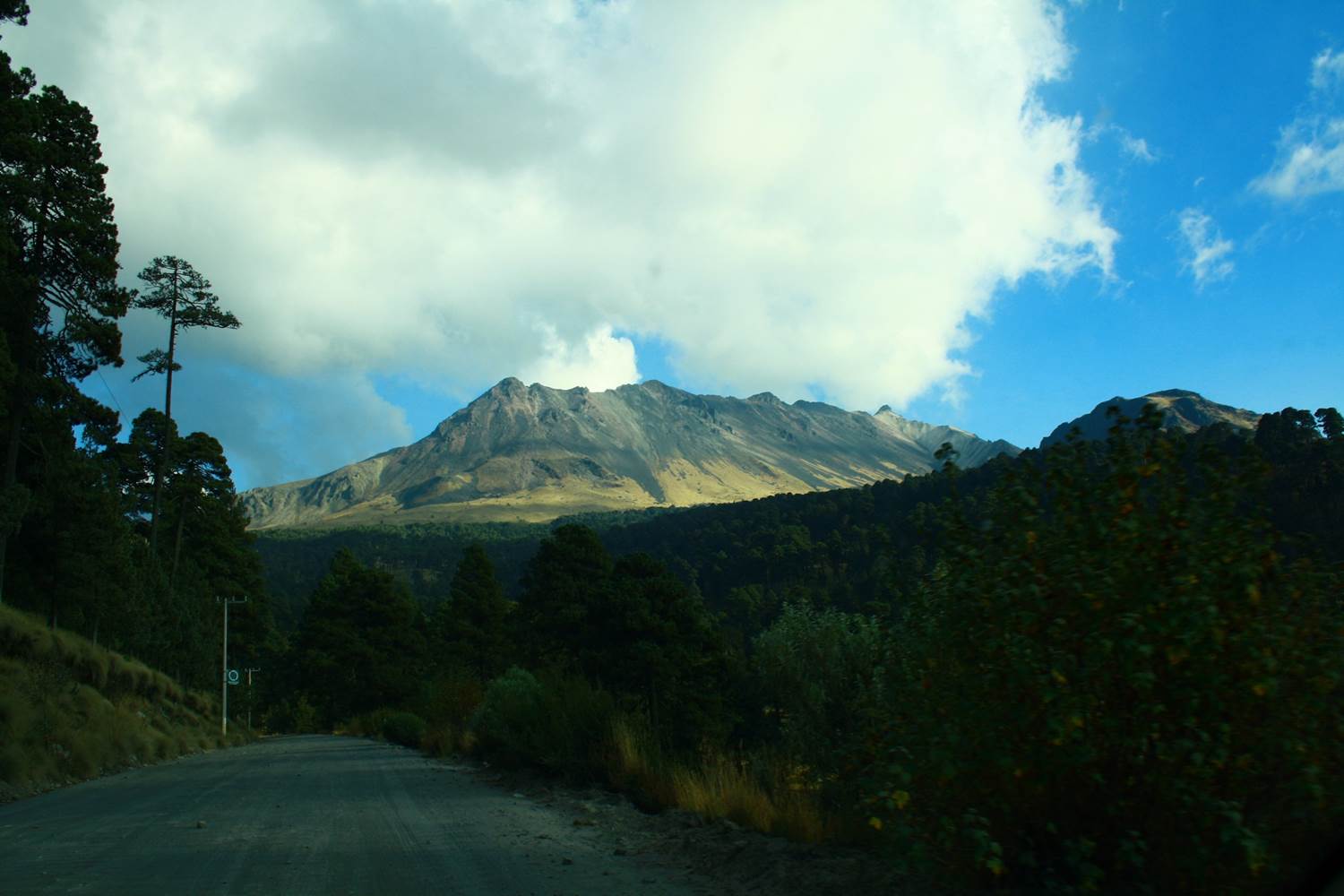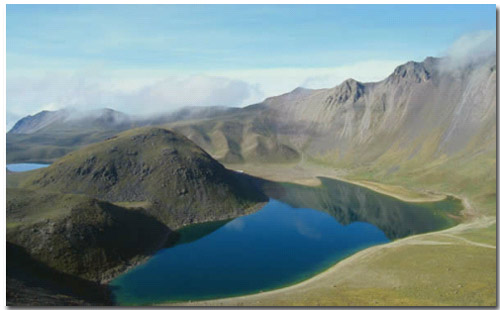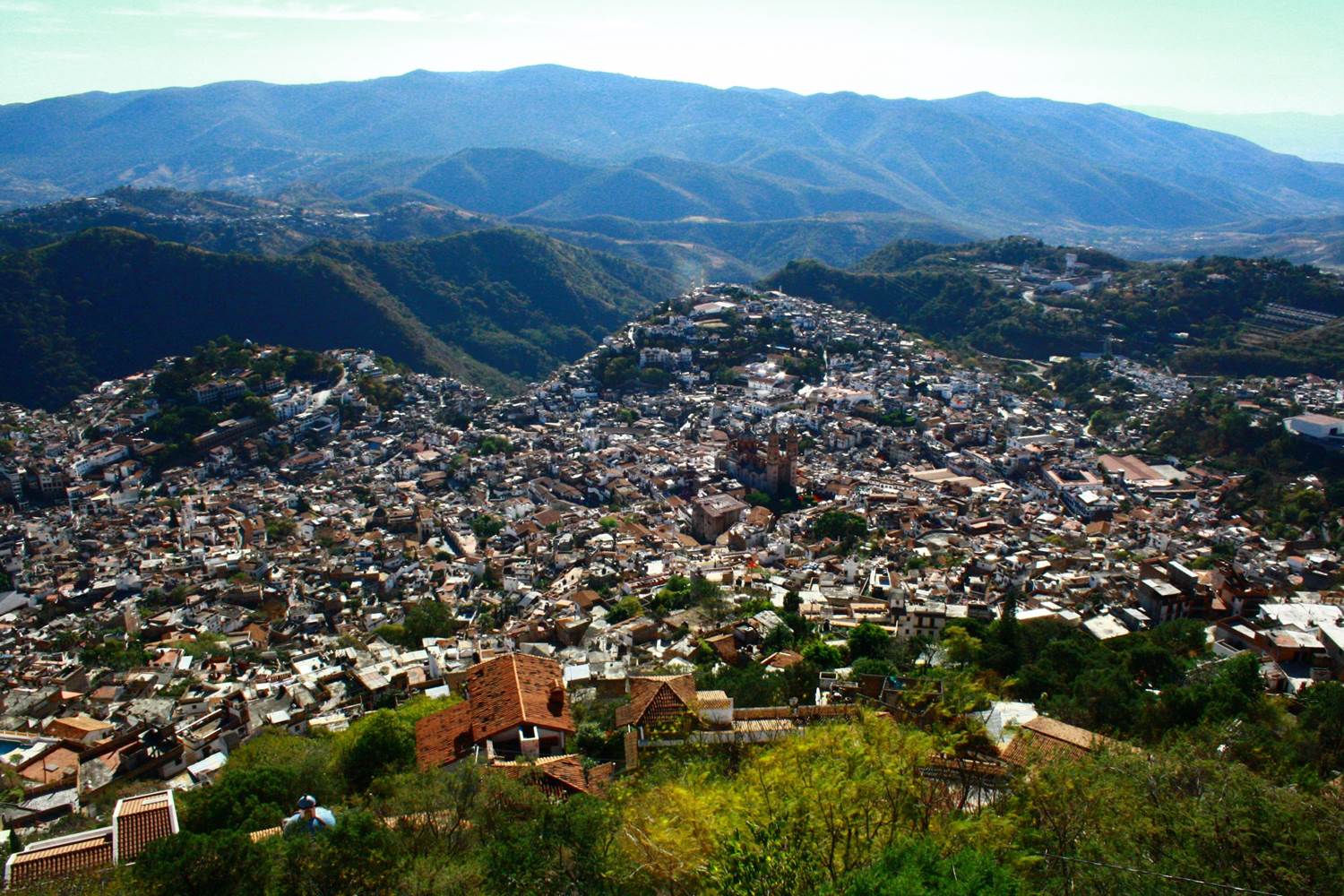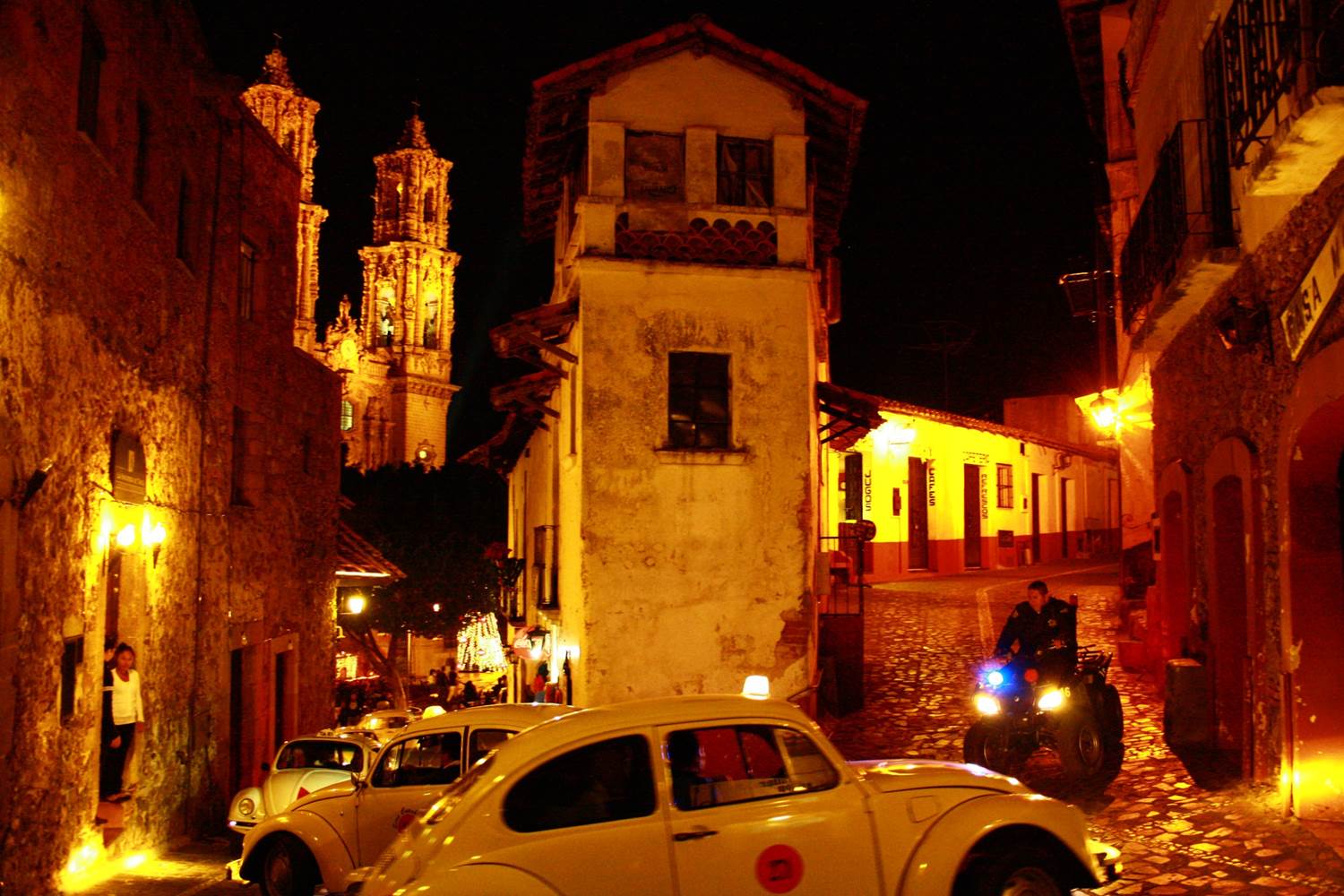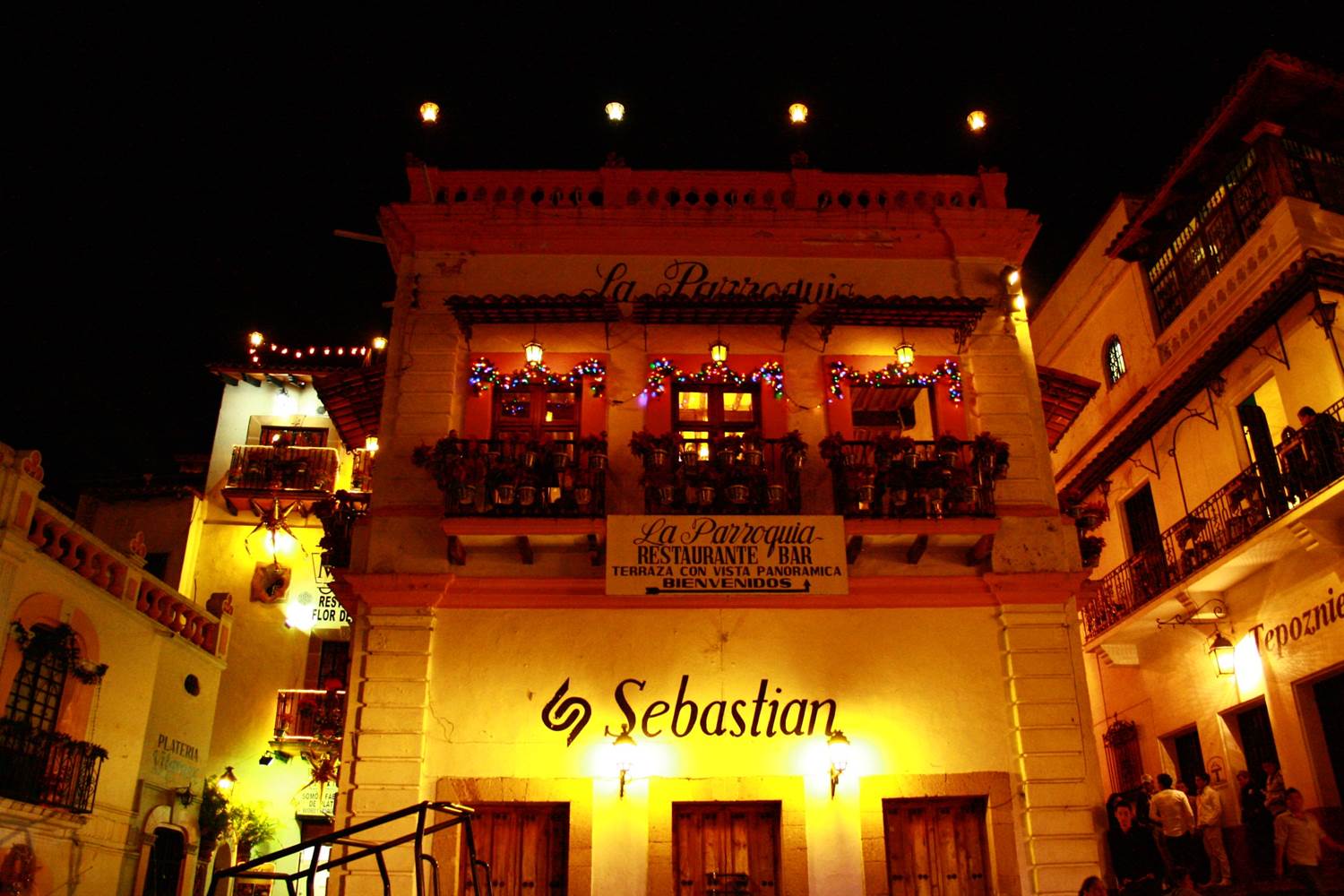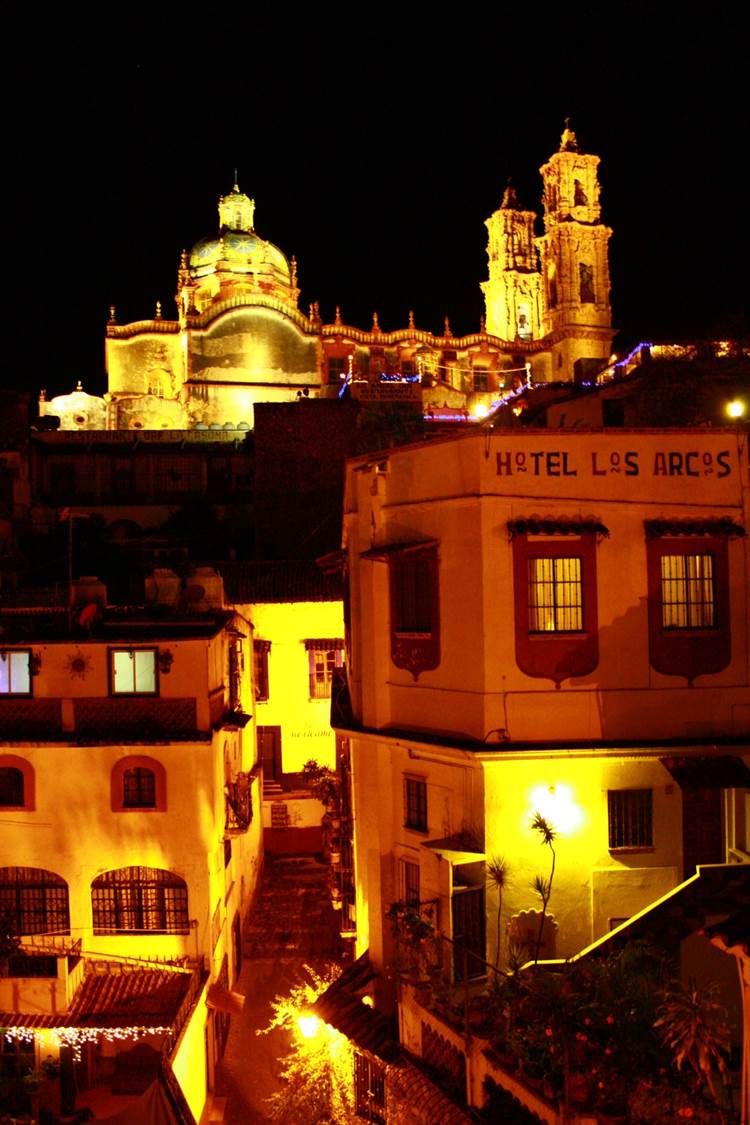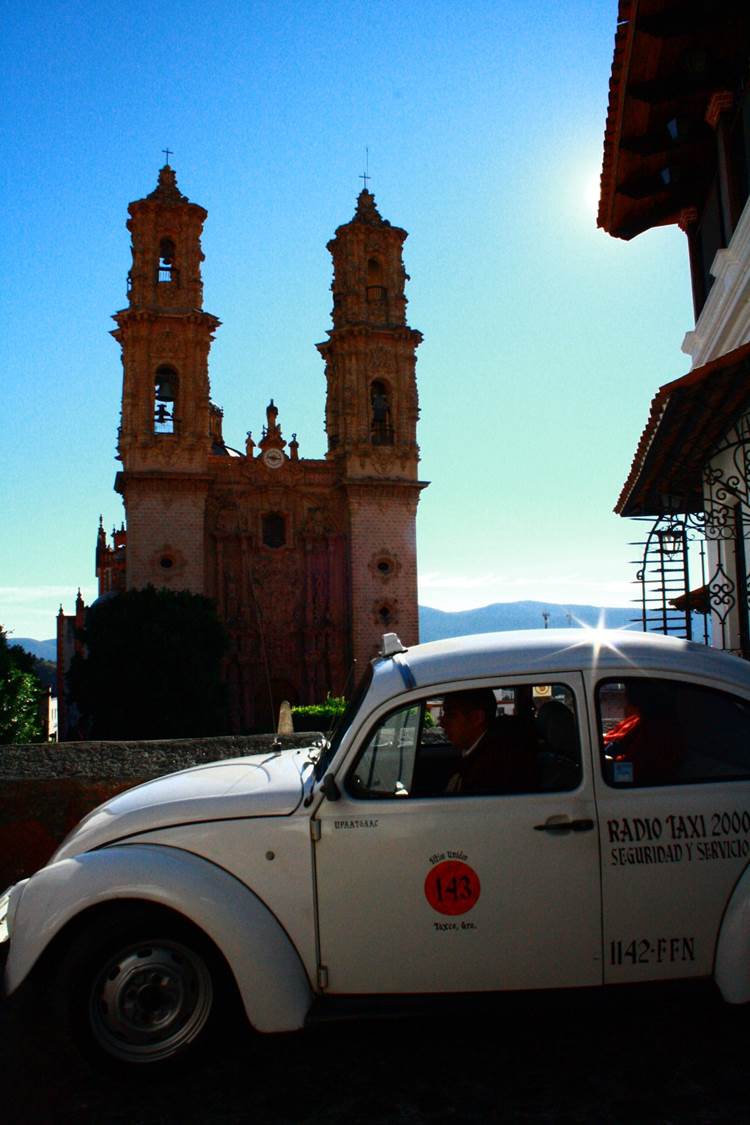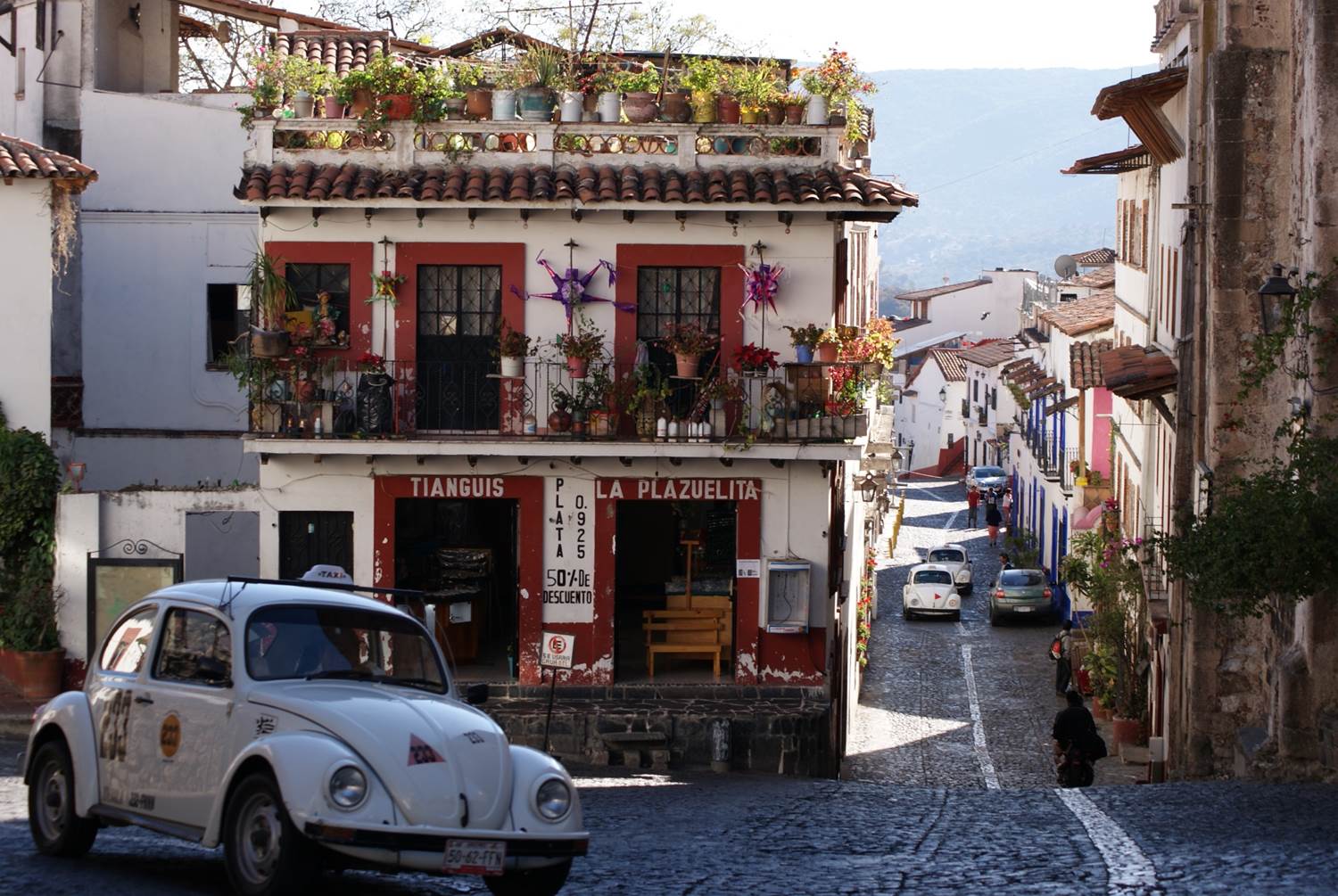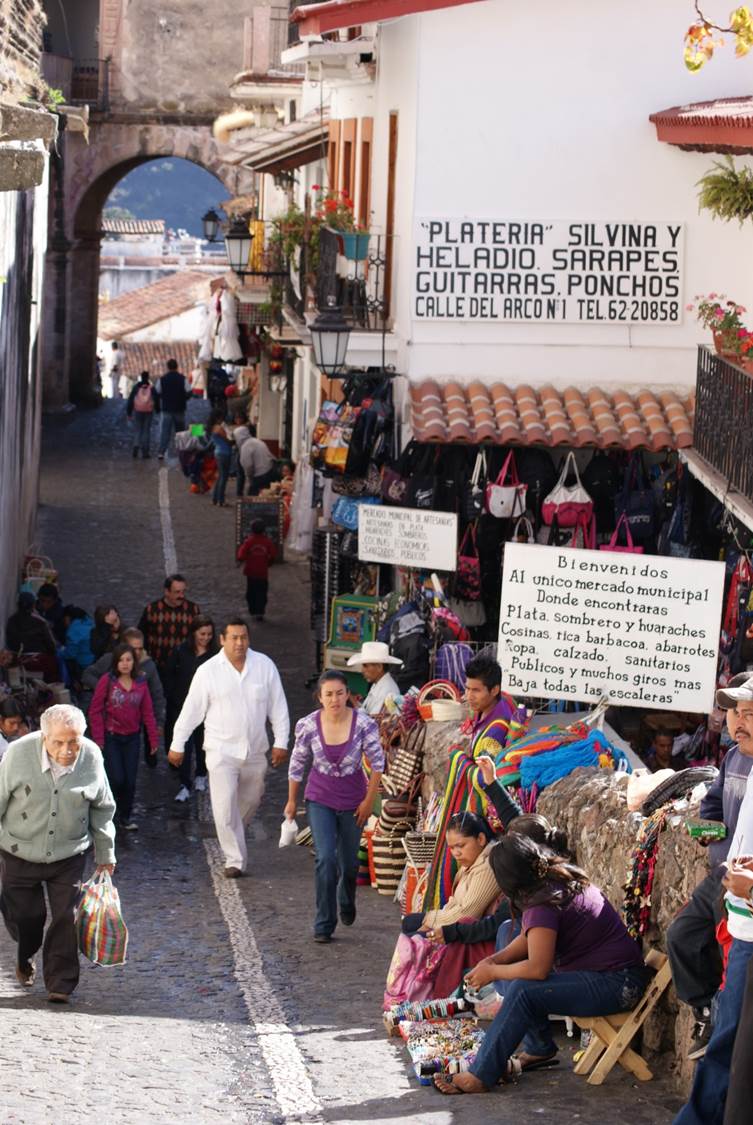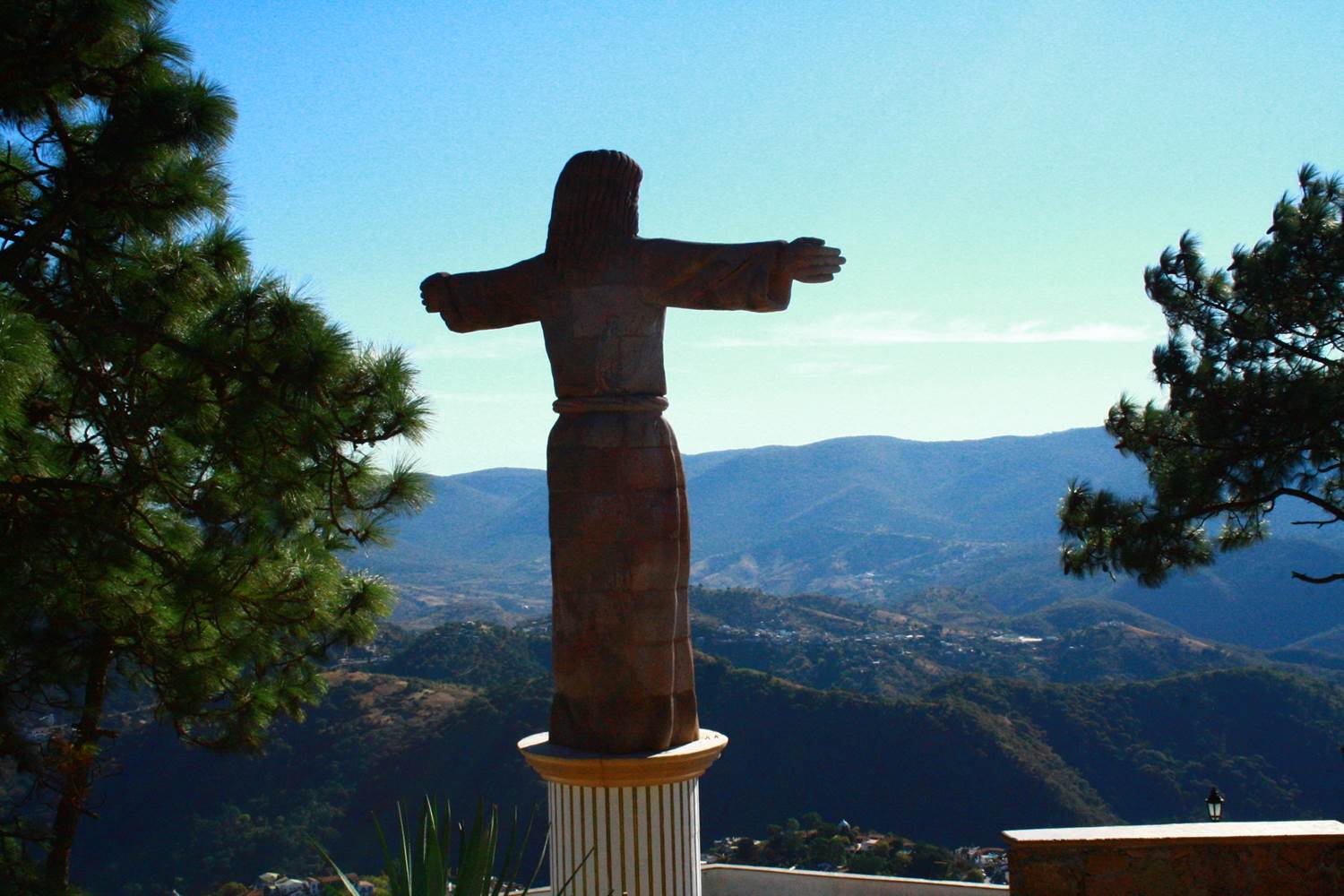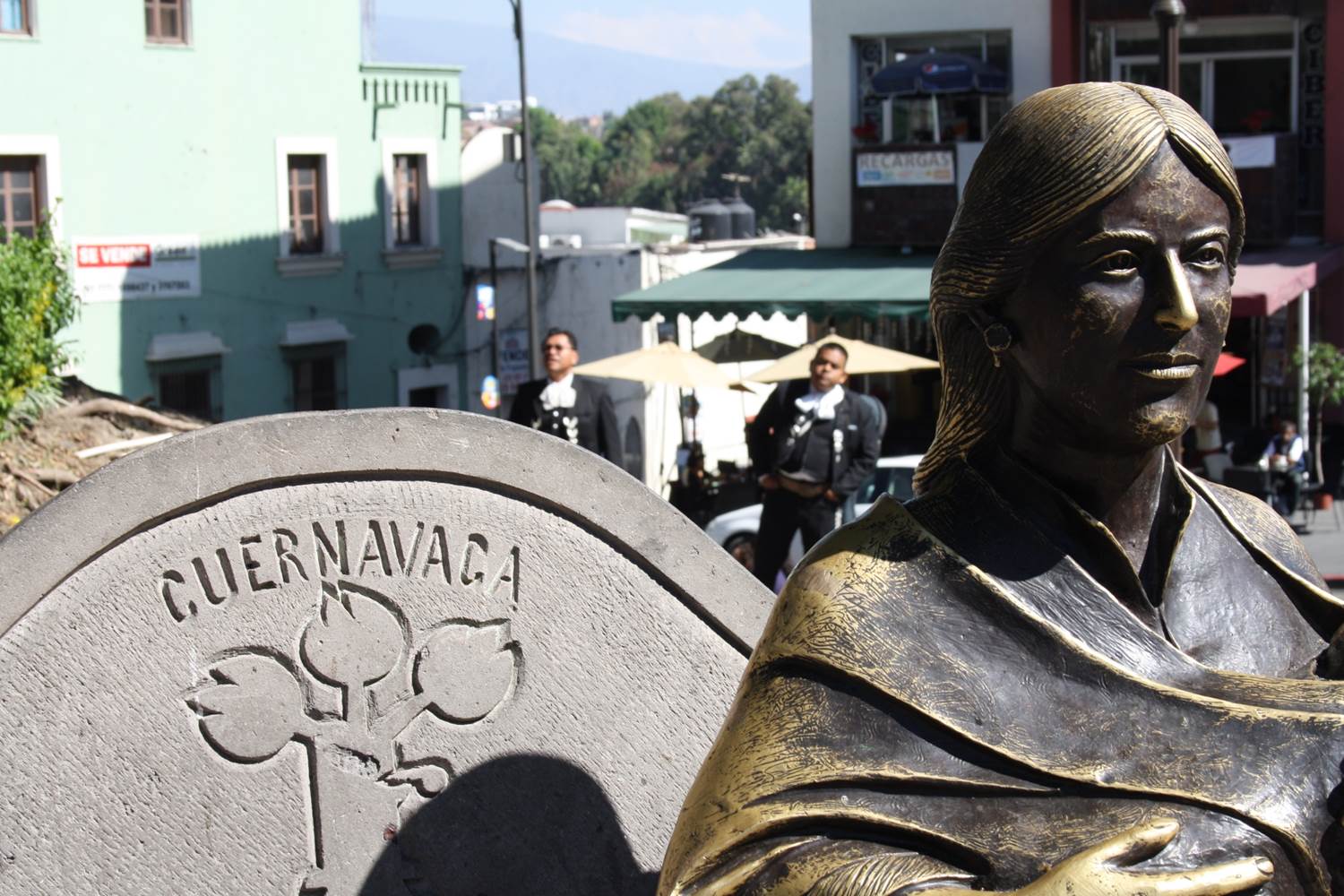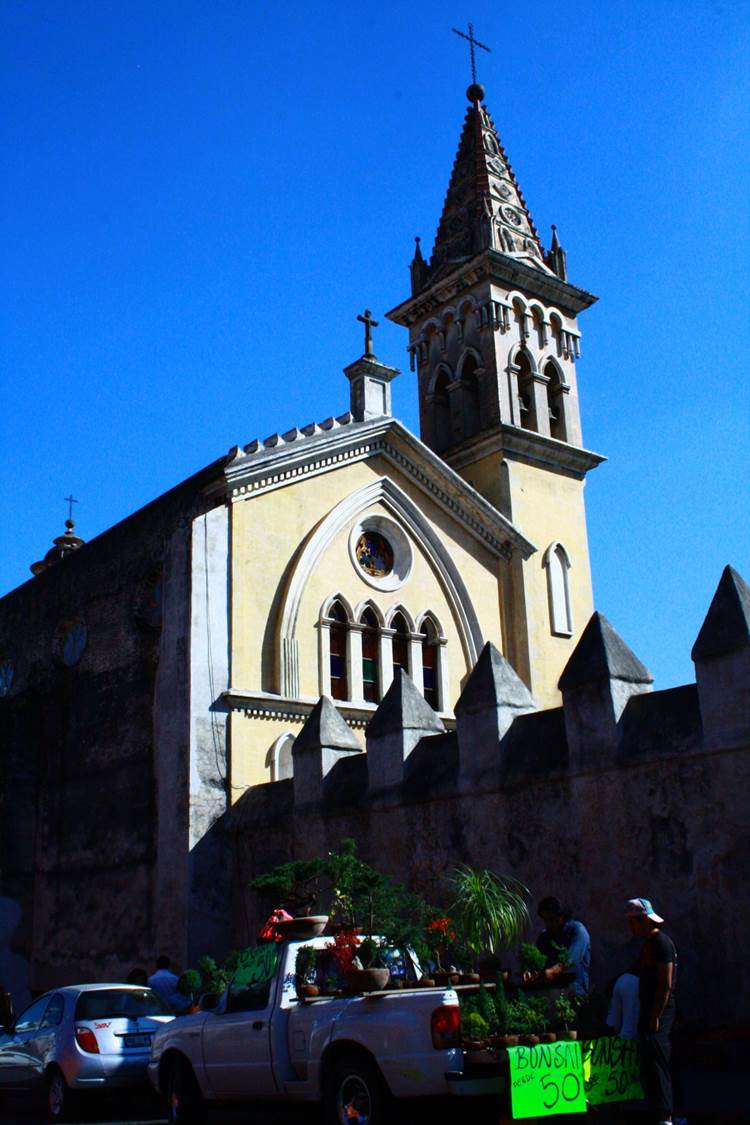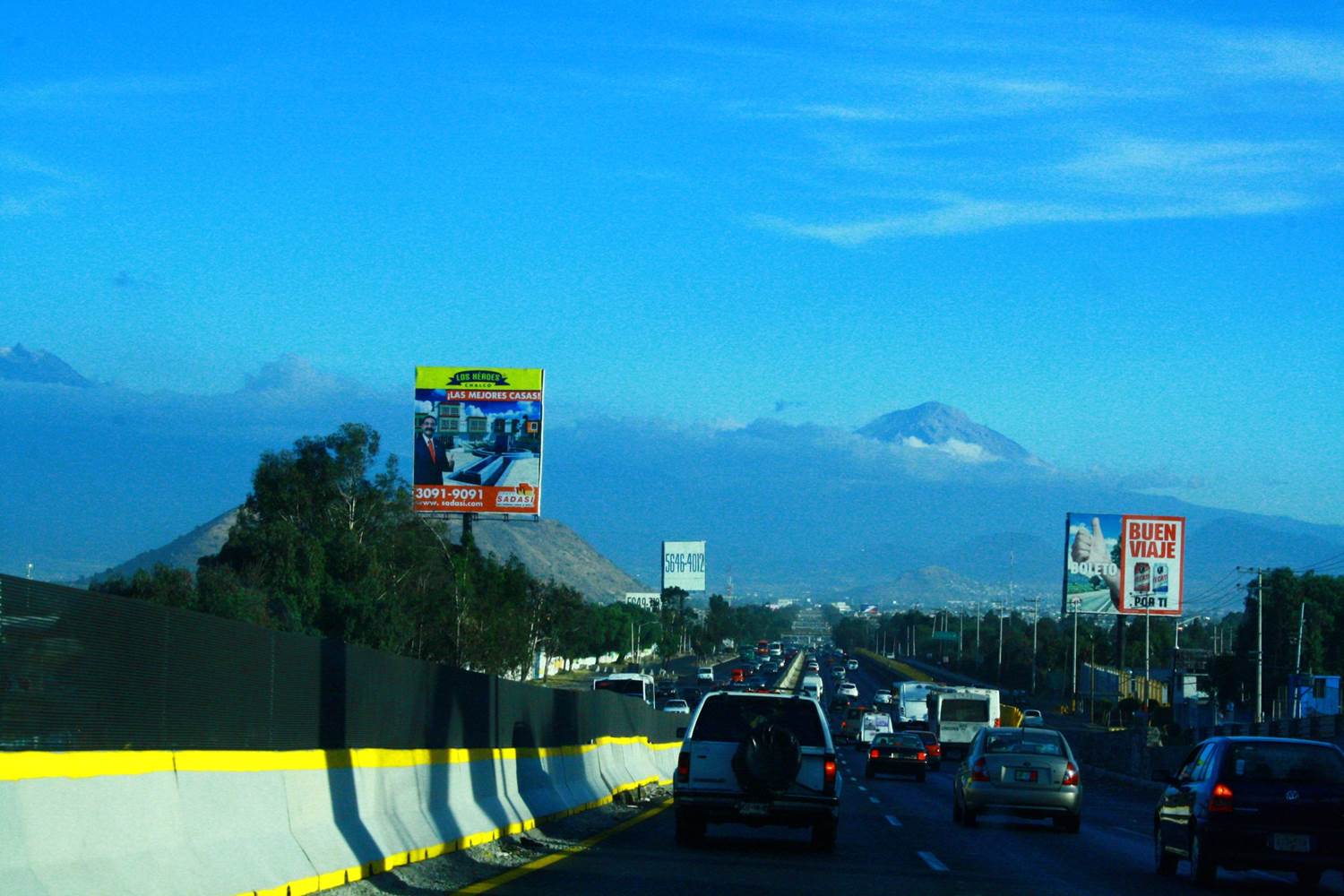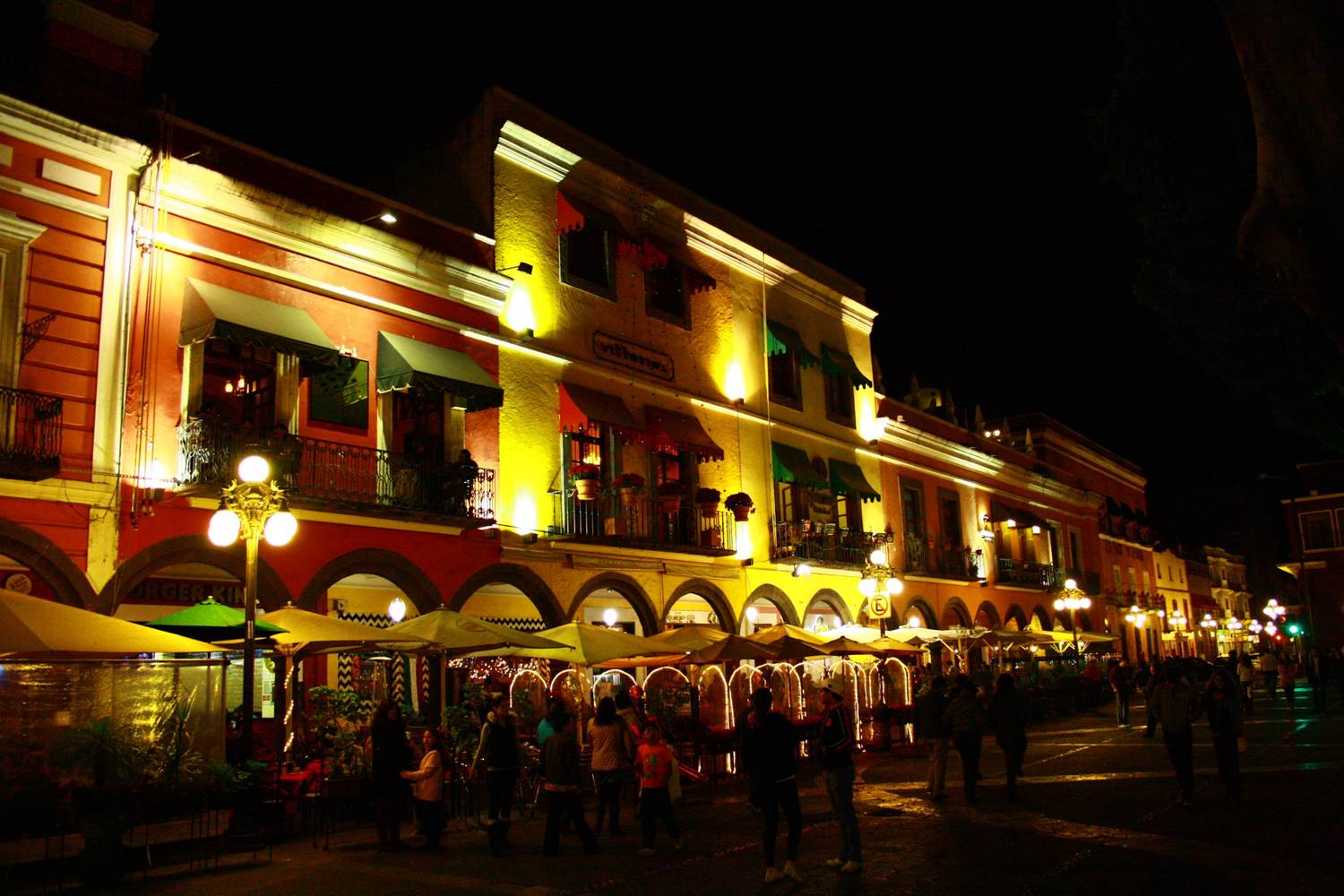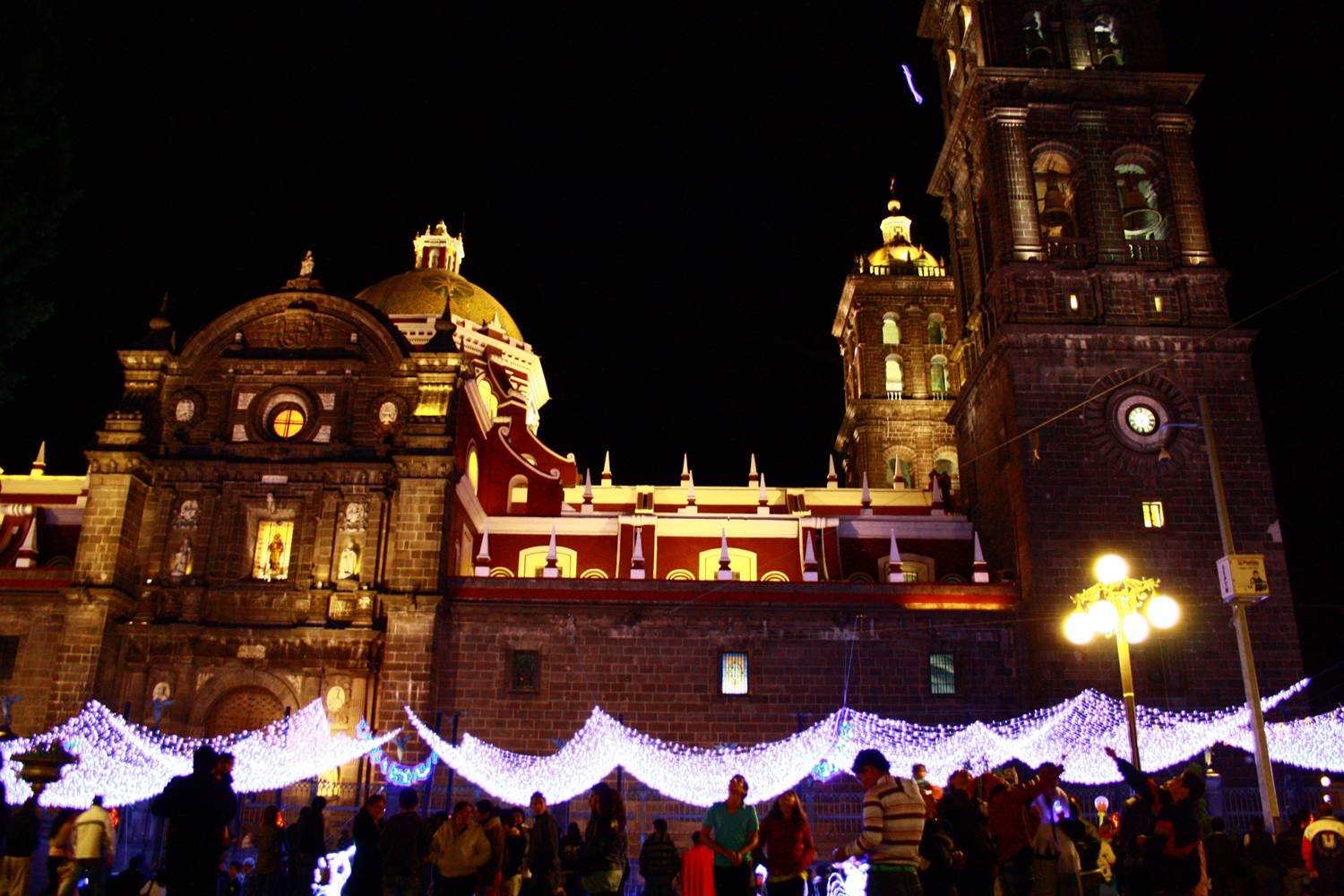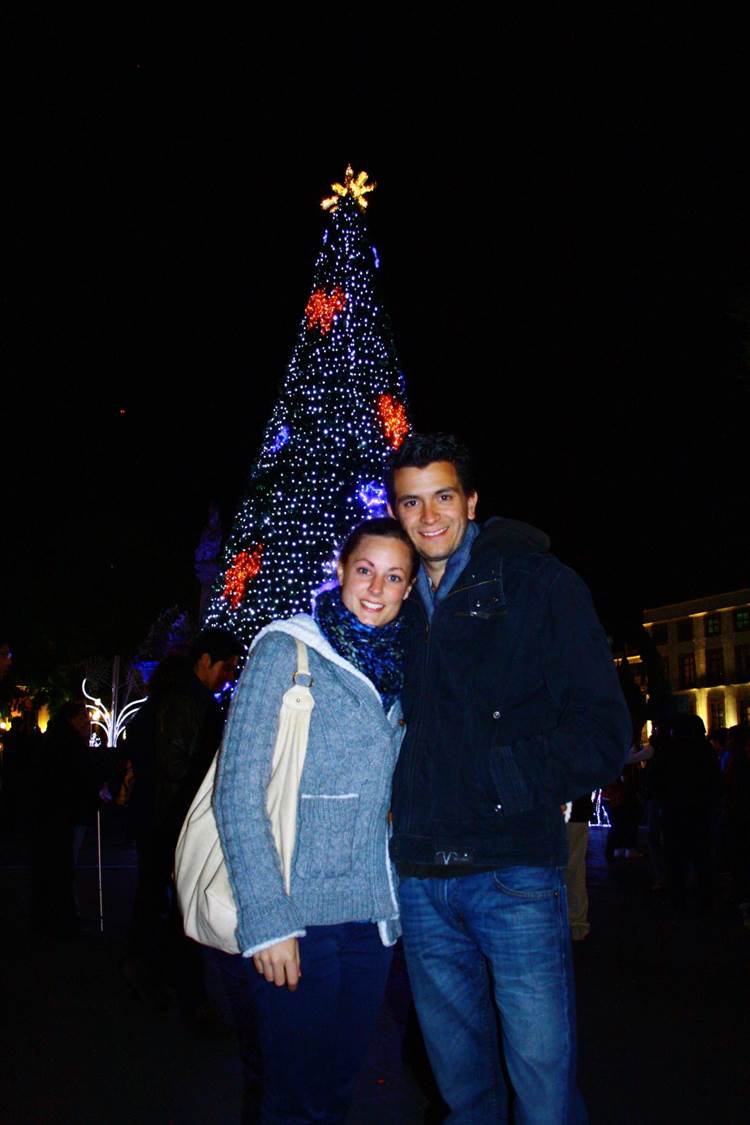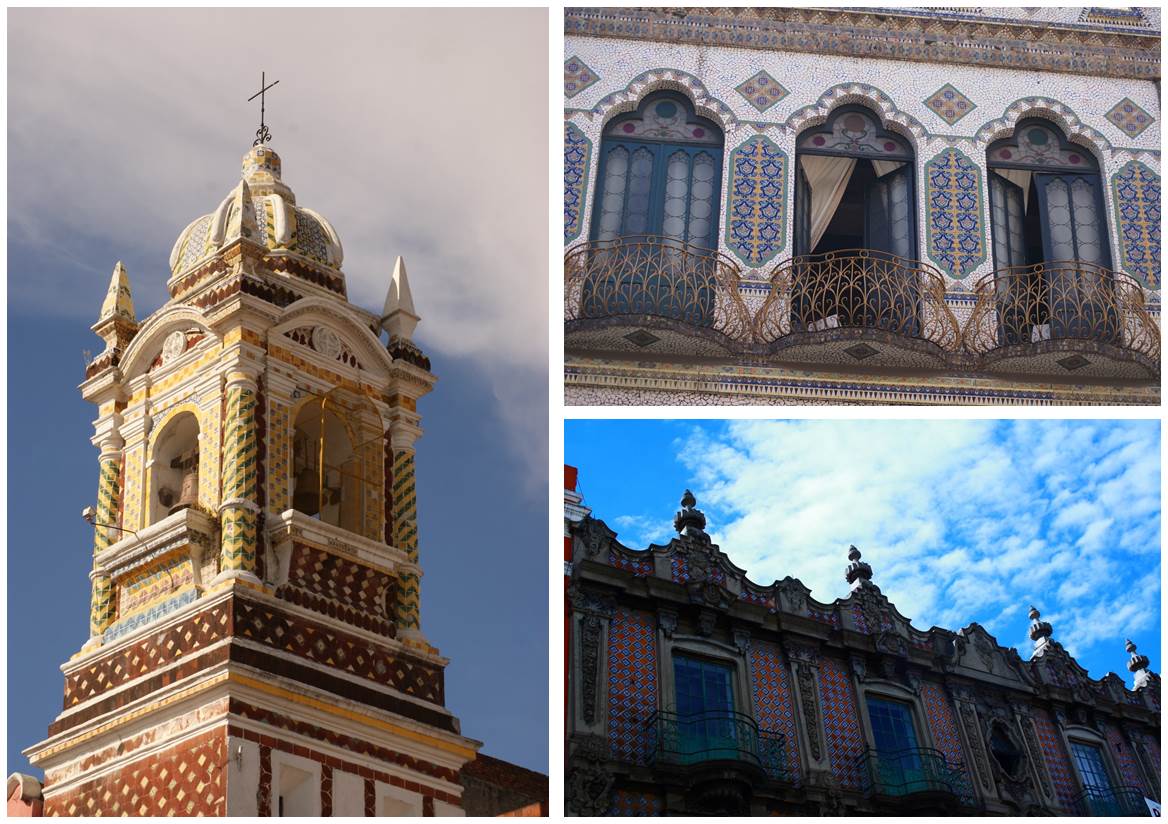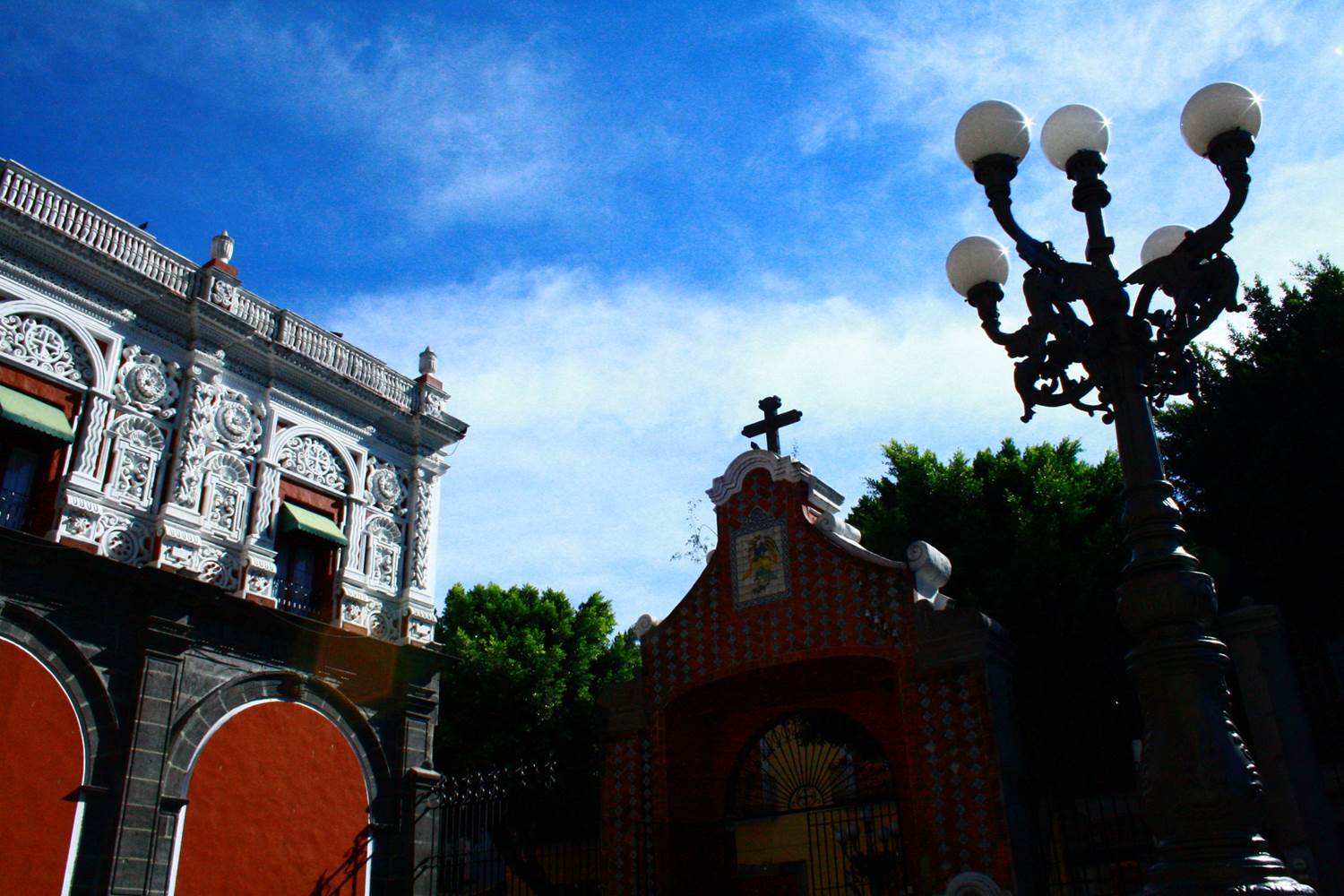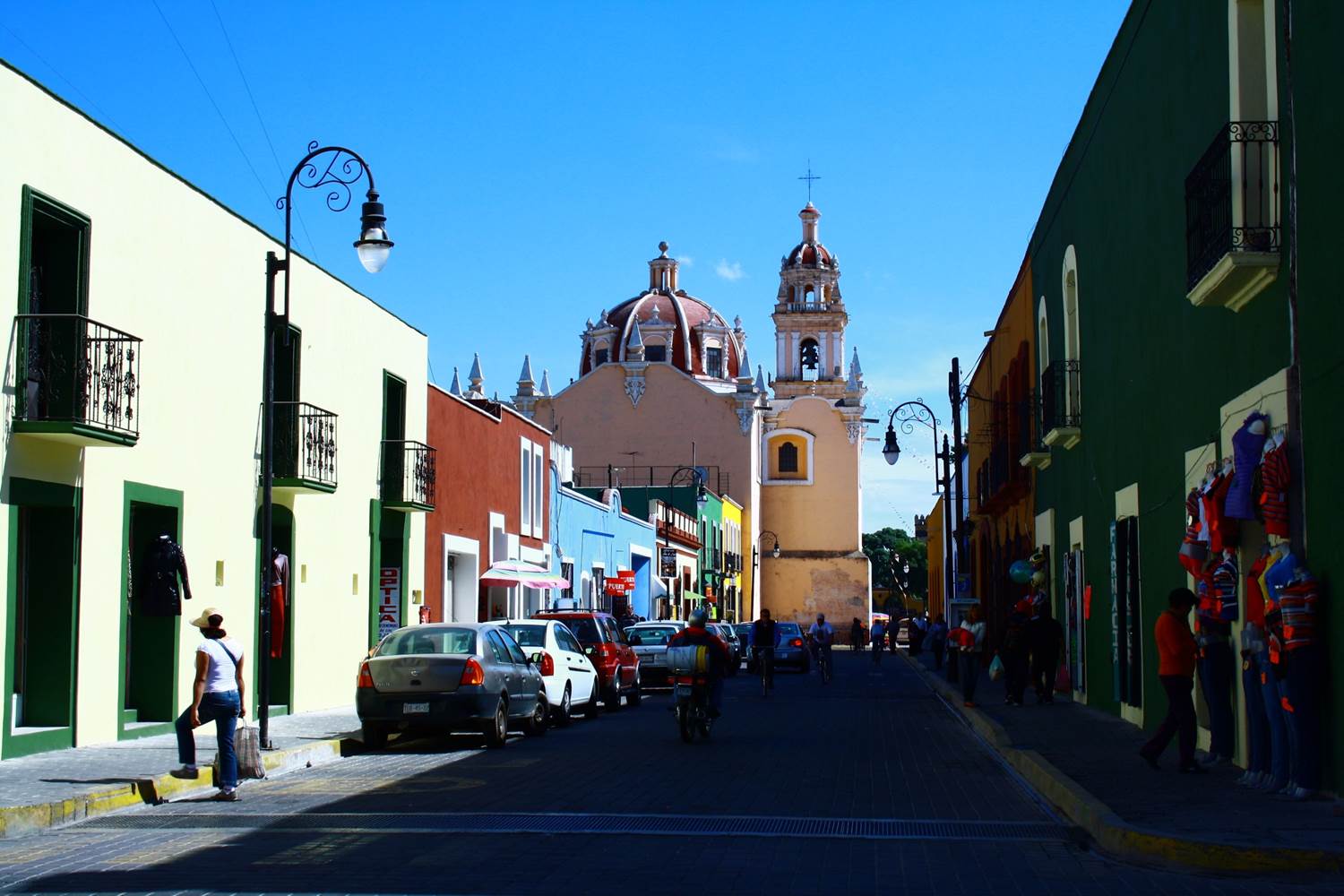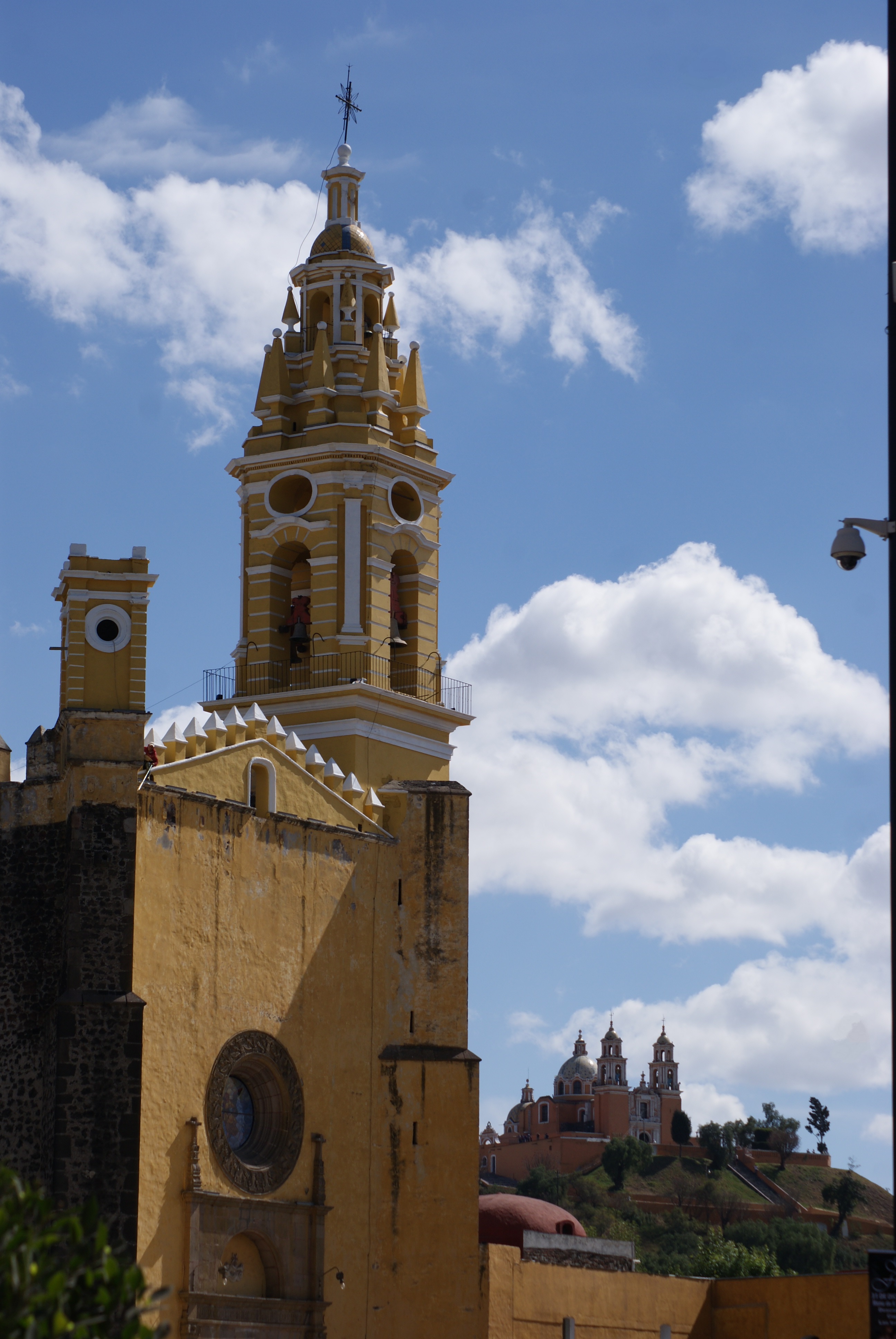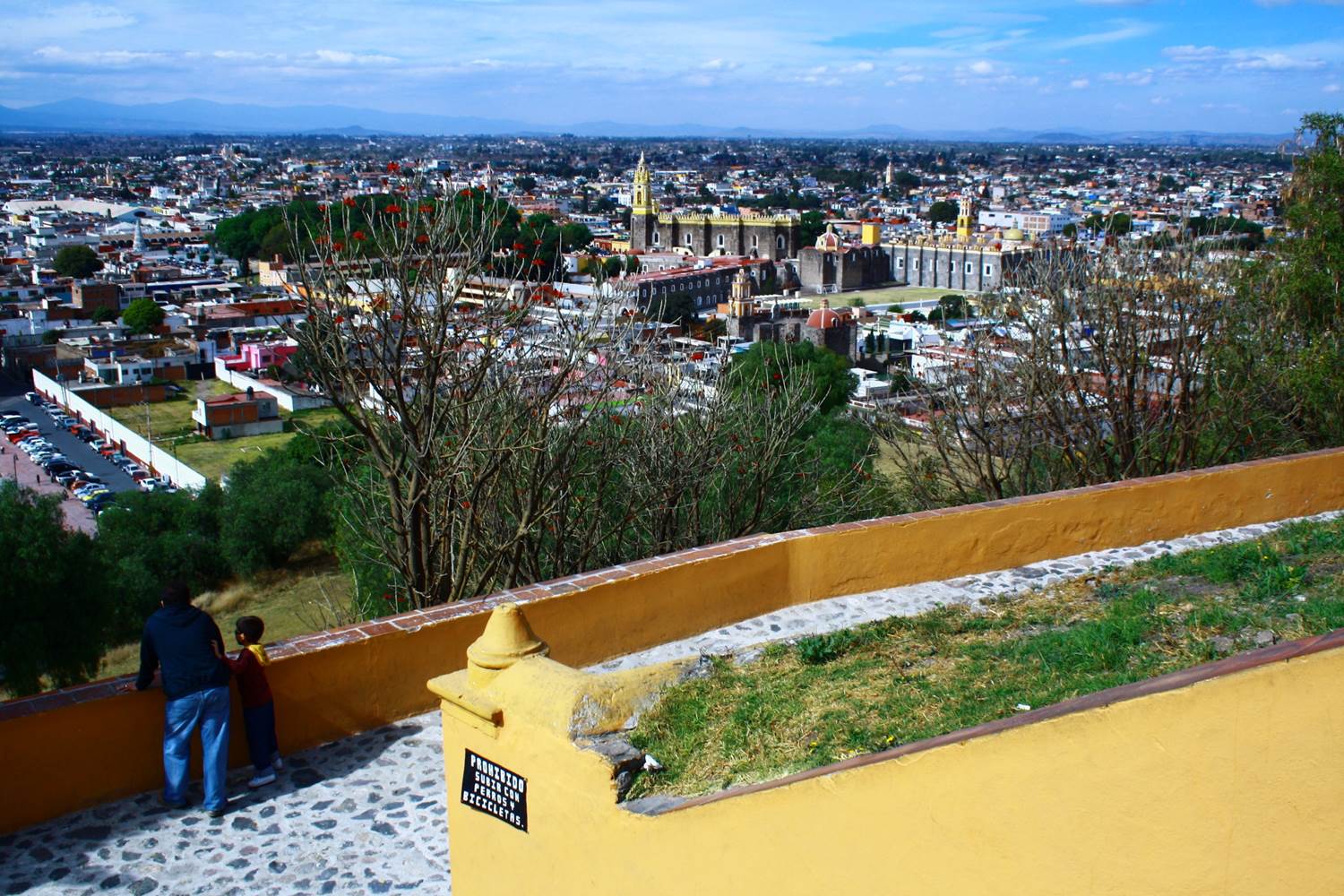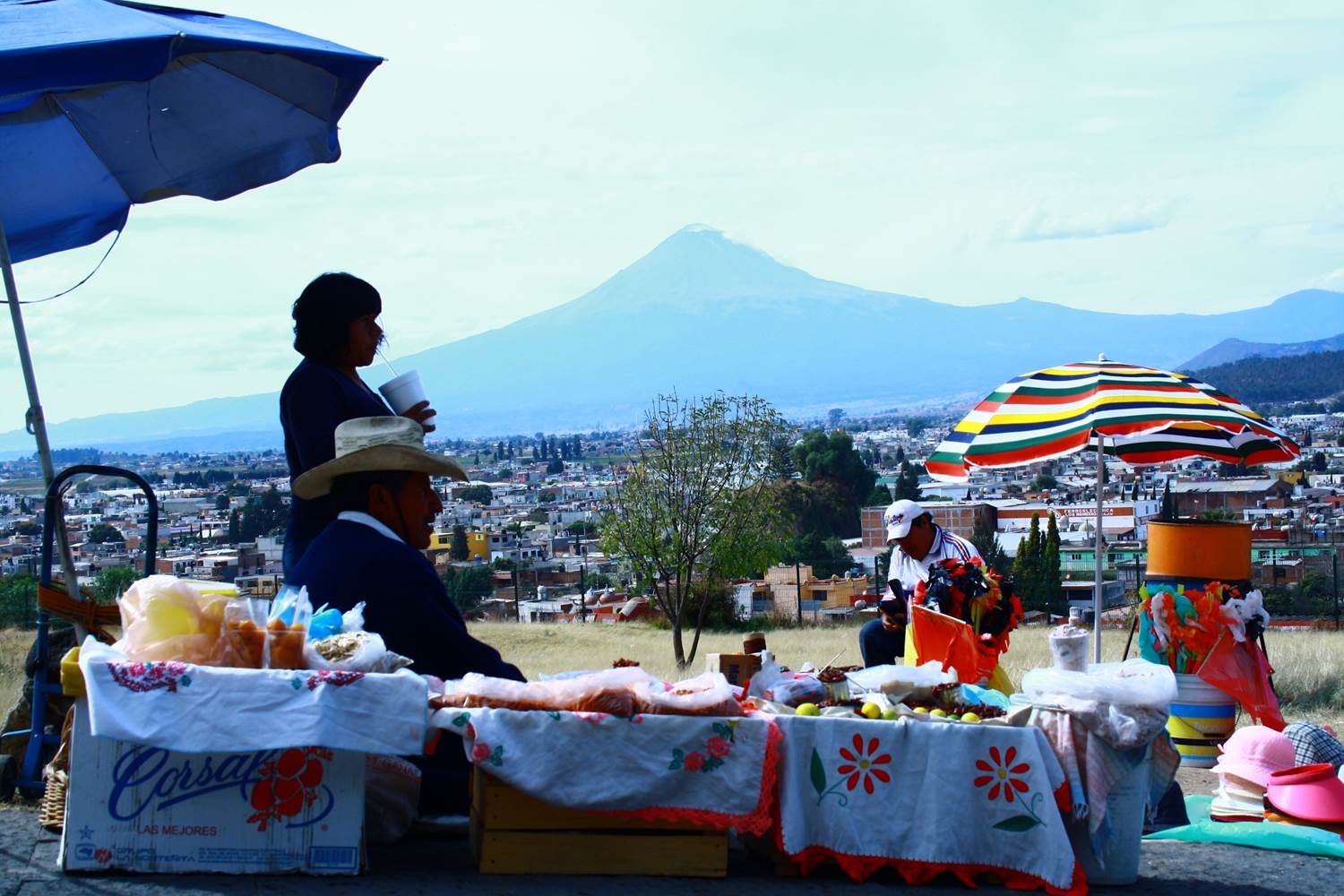Mexico City is a popular travel destination but its surroundings are quite spectacular as well. Do you have three additional days to explore the south of the Mexican capital? Then treat yourself and hit the road. You´ll drive through Mexico´s highest mountains and enjoy the beauty of some of the country´s prettiest colonial towns.
• Nevado de Toluca • Taxco • Cuernavaca • Puebla • Cholula •
* Click on the pictures to bring up bigger images
Day 1 – Toluca´s Nevado
Get up early to pick up your rental car and head to your first destination: Toluca´s Nevado or snowy mountains. Unlike its name promises there is not always snow in these highlands. We were exploring the area in December last year but our wishes for snow stayed unfulfilled. But don´t worry, also without white capped summits a drive to the top is absolutely worth it.
El Nevado de Toluca is in fact a stratovolcano that is considered active – its last eruption was 3300 years ago. After about one hour driving you leave the main road to start ascending to the volcano crater. The climb up offers fine panoramas but wait till you arrive at the crater. Park your car at the parking lot and walk 2km to the intensely blue crater lakes, so-called la Luna (the moon) and el Sol (the sun). The lakes are surrounded by two of Mexico´s highest peaks: Pico del Fraile (Friar’s Peak) of 4680 meters and Pico del Aguila (Eagle’s Peak) of 4640 meters. A striking landscape 
Important drive details:
This first day is an intense driving day so I suggest calculating the driving hours on beforehand. Here we go: From Mexico City to el Nevado de Toluca you need about 1 hour and include some extra time to get out of this high traffic density city. The off-road up to the Toluca´s crater exists of two parts: The first part is 3km long and not too bumpy. The second part is very bumpy at some parts and counts approx. 17km. Depending on your vehicle and experience with this type of roads you need in total 1.5 to 2 hours to the top and approx. 1 to 1.5 hours back down to the main road. Add the time you want to spend hiking at the crater lakes and 3 more hours until Taxco. I strongly recommend driving this last part by daylight: The road from el Nevado de Toluca to Taxco is very curvy and there is no street-lightning. So check what time the sun sets in order to determine your morning departure time.
From Nevado de Toluca to Taxco
At some point on the way to Taxco you´ll probably start to wonder if it´s worth to drive so many curves through the Sierra Madre del Sur to “just” some town. As soon as we arrived, we were instantly convinced that we´d done the right thing. In a broad valley hundreds of charming same-style buildings gave us a warm welcome. Taxco´s impressive scenery promises a pleasant stay and most certainly complies.
* Click on this picture, brings out a much better impression 
I can´t tell you how much I love this small valley town. Taxco is simply utterly adorable. The small and steep one-way streets may get you somewhat disoriented in the beginning but every person we asked to help us out was very friendly and knew his/her way around town. The abundance of white beetle taxis rushing around like ants adds even more charm to this idyllic silver-mining city.
We stayed at lovely Hotel Mi Casita two blocks away from the zócalo or main square.
Day 2 – Taxco & Cuernavaca
Since the Spanish arrived in 1522, Taxco had three silver booms. Silver mining operations have come to a close but crafting of it into jewelry and silverware is, next to tourism, one of Taxco´s main economic activities. Expect therefore lots of silver shops with cheap and high quality pieces.
One appreciated historical figure in Taxco is José de la Borda. He was a French/Spaniard who wasn´t only responsible for the second silver boom in the 18th century, he also paid for the 200-year-old churrigueresque church Santa Prisca looming at lively Plaza Borda in the city center.
There are two good options for excellent views over the valley. You can either take the teleférico (cable car) or drive up to the Christ Monument. We took a taxi up and we were glad we did so – it´s easy to get lost in the maze of tiny streets.
From Taxco to Cuernavaca
The road from Taxco to Cuernavaca is flat and straight and takes only 1 hour. It´s almost to call unfortunate that Cuernavaca comes right after Taxco in this small getaway round-trip. I was a bit disappointed, but hey, try to give Cuernavaca an honest change, it´s really a nice place.
Cuernavaca is one of the oldest cities in the country. Here you find el Palacio de Cortés built by the Spanish on the site of the Aztec Pyramids they had destroyed. It was Cortes´s residence until 1540 when he returned to Spain. Inside this well-preserved building you´ll find murals of famous painter Diego Rivera reflecting both state Morelos and Mexican history.
Stroll around the center and go visit la Catedral de la Asunción. On the way you´ll come across a cute little book market and artists selling their work in the streets. I think 2-3 hours are sufficient to get a good impression of this popular weekend destination for los chilangos, the residents of Mexico City.
From Cuernavaca to Puebla
From Cuernavaca to Puebla you need about two hours. You can take either the road staying south that goes through the mountains or going north that passes by Mexico City. We took by accident the latter route which we thought was a good non-mountainous option.
Puebla is one of the few colonial cities in Mexico that wasn´t constructed on top of Indian ruins. The Spanish conquistadores founded La Puebla de los Ángeles in 1531 and left a rich heritage of colonial buildings. Despite its large size of 1.4 million inhabitants there still remains a cozy city atmosphere.
Day 3 – Puebla & Cholula
Puebla is famous for its Talavera ceramics – a result of the fine clay in the region combined with pottery techniques of the indigenous in the state of Puebla and the Spanish craftsmen from Talavera de la Reina. But Talavera wasn´t limited for pots and plates, the azulejos or tiles decorated gorgeously façades of monasteries and other buildings, being a key element of Puebla’s baroque architecture.
I really like strolling through the beautiful historical center of Puebla that was named a World Heritage Site in 1987. The main reason for this acknowledgment is the variety of architectural styles and techniques such as Baroque, Renaissance and Classic. The Talavera tiles give the city a creative and energetic charisma and there are many beautiful churches – amongst them the second largest cathedral of Mexico.
The omnipresent stunning architecture almost makes you forget that Puebla is also famous for its exquisite cuisine. Some of Mexico´s most popular national dishes, including mole poblano and chiles en nogada, are originally from Puebla. In other words, Puebla is a terrific place for all the senses.
From Puebla to Cholula
Twenty minutes away from Puebla you encounter pueblo mágico Cholula with the same-named pre-Columbian archeological site. I´m referring to the Great Pyramid of Cholula, the largest pyramid ever built. With a base of 450m x 450m and a height of 66m, its total volume (3.3 million m³) is estimated much larger than the great pyramids of Egypt.
Unfortunately the ruins have been neglected over the centuries and now look more like a huge hill. The spot is still quite impressive though, thanks to the beautiful church Nuestra Señora de los Remedios standing on top of this “hill” and a stunning 360° view over Cholula and volcanoes Popocatépetl and Iztaccíhautl. A satisfying scenery to conclude this short journey with 
Access to Popocatépetl or El Popo (5465 meters) is currently not permitted due to the threat of volcanic activity. Walks on the “Sleeping Lady” Iztaccíhautl (5230 meters) start at el Paso de Cortés, a saddle accessible by car between Mexico´s second and third highest peaks.
Back to Mexico City
After three delicious days, it´s time to head back to Mexico City (1.5 hour drive from Cholula). I hope this road trip gave you some unexpected insights of the country. Want to see more of Mexico? Check out my self-composed and traveled 12-day round road trip through the Yucatán Peninsula >>
I´ve selected the most important places in the area to create a doable 3-day itinerary. If you want to expand the road trip you can easily add nights and sites wherever you feel like. Do you have any ideas? Feel free to share them!
